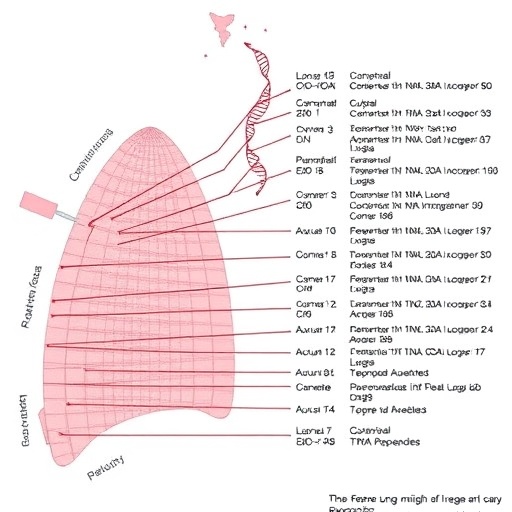Bogor (Indonesia) and Nairobi (Kenya), March 20, 2017 – Forests and trees play a major role on water cycles and cooler temperatures, contributing to food security and climate change adaptation. In recent decades, the climate change discourse has looked at forests and trees mostly as carbon stocks and carbon sinks, but now scientists are calling for more attention on the relation between trees and water in climate change.
Scientists suggest that the global conversation on trees, forests and climate needs to be turned on its head: the direct effects of trees on climate through rainfall and cooling may be more important than their well-studied capacity of storing carbon. A new publication and a symposium try to shed new light on the debate.
The research paper Trees, forests and water: Cool insights for a hot world compiles older knowledge and new research findings pointing at the important effects of trees on helping to retain water on the ground and to produce cooling moisture, which in turn have a positive impact on food security and climate change adaptation.
Authors are also participating in a two-day virtual symposium hosted by FTA, the CGIAR Research Program on Forests, Trees and Agroforestry. On the occasion of the International Day of Forests (March 21) and World Water Day (March 22), this webinar will serve to discuss the findings of the paper and to new areas of research about the linkages of forests with water and climate.
Trees for food security and climate change adaptation
"The role of trees widens," said the Director of FTA, Dr Vincent Gitz. "This is very important in the context of the Paris Agreement, which recognized climate change is not only about mitigation, but also about adaptation."
"The influence of trees on water cycles has important consequences on the global agenda for food security and climate change adaptation, at different scales," Dr Gitz explained. "With trees, there is no tradeoff between adaptation and mitigation, but a synergy."
"Carbon sequestration is a co-benefit of the precipitation-recycling and cooling power of trees. As trees process and redistribute water, they simultaneously cool planetary surfaces," said Dr David Ellison, lead author of the study.
"Some of the more refined details of how forests affect rainfall are still being discussed among scientists of different disciplines and backgrounds. But the direct relevance of trees and forests for protecting and intensifying the hydrologic cycle, associated cooling and the sharing of atmospheric moisture with downwind locations is beyond reasonable doubt."
Science collaboration for climate
This emerging area of research combines the knowledge of many fields of science: biology, chemistry, climate science, geology, hydrology and social science.
The paper and symposium are a good example of interdisciplinary research and collaboration which is necessary to address the issue of climate change adaption from multiple science and policy angles.
###
RELATED RESEARCH PUBLICATION: Trees, forests and water: Cool insights for a hot world (Research paper)
RELATED EVENT: More info and live video stream: Virtual symposium: Cool insights for a hot world
March 21: 8:00am GMT to 11:00am GMT (Presentations and initial questions)
March 22: 8:00am GMT to 11:00 am GMT (Discussion forum and policy implications)
Event flyer
PHOTOS AVAILABLE: CIFOR's photo library
Photos of the virtual symposium and speakers (on demand).
VIDEOS AVAILABLE: ICRAF Chief Scientist Dr Meine van Noordwijk talks about the research paper
Live YouTube video stream and recording of the virtual symposium
INTERVIEW OPPORTUNITIES: Dr Vincent Gitz, Director of the CGIAR Research Program on Forests, Trees and Agroforestry (FTA)
Dr Meine van Noordwijk, Chief Scientist, World Agroforestry Centre (ICRAF)
FOR MORE INFORMATION, OR TO ARRANGE INTERVIEWS, CONTACT:
For the Center for International Forestry Research (CIFOR) in Indonesia:
Rodrigo Ordóñez, [email protected], +62 (0) 82124935323
For the World Agroforestry Centre (ICRAF) in Kenya:
Elizabeth Kahurani Kimani, [email protected], +254 (0) 721537627
ABOUT FTA: This event is organized by the Center for International Forestry Research (CIFOR) and the World Agroforestry Centre (ICRAF) as part of the CGIAR Research Program on Forests, Trees and Agroforestry (FTA). This collaborative program aims to enhance the management and use of forests, agroforestry and tree genetic resources across the landscape from forests to farms. CIFOR leads FTA in partnership with Bioversity International, CATIE, CIRAD, INBAR, Tropenbos International, and the World Agroforestry Centre.
This event is supported by the CGIAR Fund Donors.
Media Contact
Elizabeth Kahurani-Kimani
[email protected]
254-072-153-7627
@ICRAF
http://www.worldagroforestry.org/
############
Story Source: Materials provided by Scienmag




